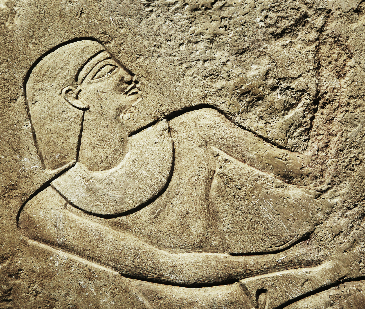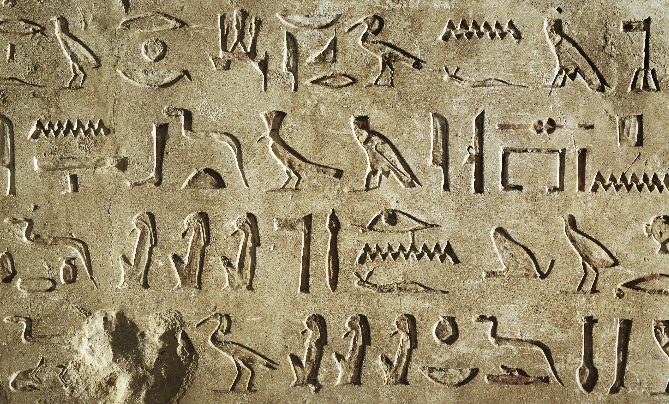Hau(nefer), the lector priest
Fragments of an ancient Egyptian relief
The Egyptian Collection of the Museum of Fine Arts has acquired a relief fragment of a tomb dating back to ancient Egypt’s Old Kingdom period.
| Dr. Liptay Éva |
2014-02-18 21:48 |
This has been the costliest purchase in the history of the Egyptian collection, which was created back in 1934 by merging three collections, those of the National Museum, the Museum of Ethnography and the Museum of Applied Arts. Nevertheless, it is not only the price tag that makes this object valuable. There are few items in the museum’s collection from the Old Kingdom (the second half of the 3rd millennium), and the quest for a suitable object to represent this period had been launched a long time ago.

The fragment (220 cm by 46 cm), most presumably, originates from a private tomb and served as decoration for the entrance or for an inner arch. The installation of the relief in the exhibition follows this concept to illustrate both the object’s original position and function in its original setting.
 The figure sitting on the left depicts the owner of the tomb, who is holding his rod which is a reference to his high social standing. Opposite the figure, there are two six-line texts separated with a vertical line. Interestingly, the text on the left is to be read from left to right and the text on the right the other way around. Research concluded that, most probably for the sake of symmetry, there was a similar figure on the right side of the relief which is now graphically indicated in the museum installation.
The figure sitting on the left depicts the owner of the tomb, who is holding his rod which is a reference to his high social standing. Opposite the figure, there are two six-line texts separated with a vertical line. Interestingly, the text on the left is to be read from left to right and the text on the right the other way around. Research concluded that, most probably for the sake of symmetry, there was a similar figure on the right side of the relief which is now graphically indicated in the museum installation.
In ancient Egypt, hieroglyphs conveyed meaning as texts and as pictorial symbols too. Often, the border between these two was blurred and the meaning was constructed through the interplay of text and picture. In this particular case, the tomb owner’s figure sitting on the side of the textual section is not merely an illustration, but it is also a monumental hieroglyphic sign: it is there to say that the text refers to the owner and it also confers magical protection on him.

The text on the right reveals that the person buried here was named Hau and held the title “lector priest”: he was an educated person who recited sacred texts during ceremonies. Evidence based on style and textual analysis indicates that the relief dates back to the age of the Sixth Dynasty of the Old Kingdom (approx. 2400-2200 BC), and it can also be concluded that the piece was unearthed in a cemetery of Memphis called Saqqara. The fragment turned up and was stored in a number of European collections before it made its way to Budapest, and hope was scarce to ever identify its place of origin. However, in South Saqqara at a currently excavated site, a tomb has been identified which, according to its inscription, contains the remains of a certain Hau, also known as Haunefer. There is every reason to believe that the new acquisition of the Museum of Fine Arts once ornamented the entrance of that tomb.
Photo: Csanád Szesztay